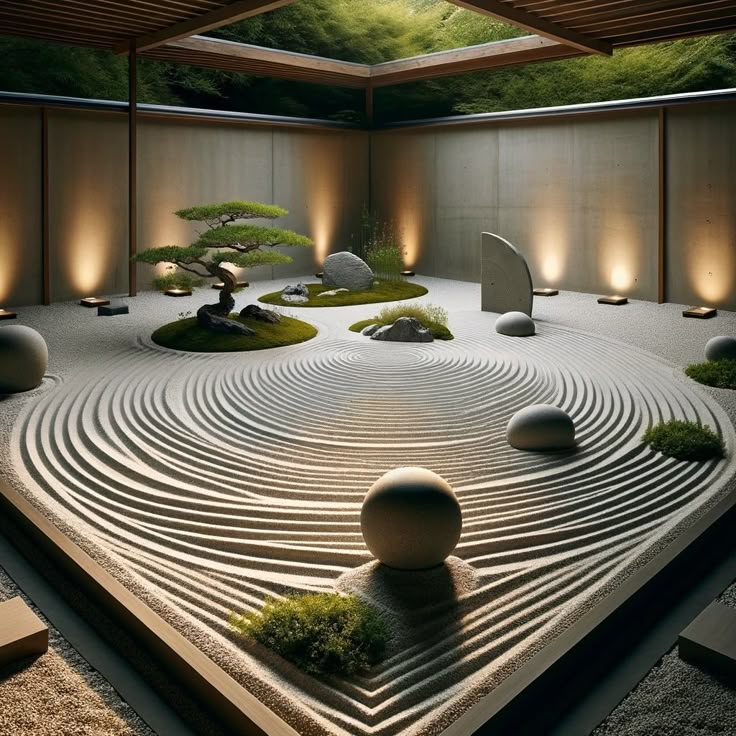In an era dominated by visual noise and digital clutter, the idea of a peaceful, minimalist garden has never been more appealing. Modern Zen gardens, inspired by centuries-old Japanese traditions yet refined by contemporary architecture, offer a calming space where serenity and structure coexist. They don’t just beautify outdoor areas—they serve as sanctuaries for mindfulness, reflection, and harmony with nature.
Whether you have a sprawling backyard or a small urban terrace, blending minimalist architecture with Zen garden principles can turn any space into a peaceful retreat. Here’s how to design a modern Zen garden that cultivates inner calm and architectural elegance.
What Is a Modern Zen Garden?
A traditional Zen garden, or karesansui, is a Japanese dry landscape composed primarily of sand, rocks, gravel, and carefully pruned plants. These gardens are not meant to be walked through but viewed, encouraging contemplation. Modern Zen gardens take these principles—simplicity, balance, and symbolism—and combine them with clean architectural lines, neutral materials, and function-focused design.
The result is a garden that feels simultaneously ancient and fresh—deeply rooted in tradition, yet perfectly aligned with today’s minimalist aesthetic.
Minimalist Architecture Meets Nature
Minimalist architecture is defined by its simplicity, clean lines, and purposeful use of space. When this is extended into outdoor design, it creates a seamless flow between interior and exterior. Think wide glass doors opening to structured courtyards, concrete or timber pathways lined with river stones, and plantings arranged with precision.
In a Zen-inspired setting, minimalist architecture doesn’t overpower nature—it enhances it. Structures become frames for the landscape, allowing plants, textures, and negative space to speak louder than ornate decoration ever could.
Essential Elements of a Modern Zen Garden
1. Gravel and Sand for Texture and Flow
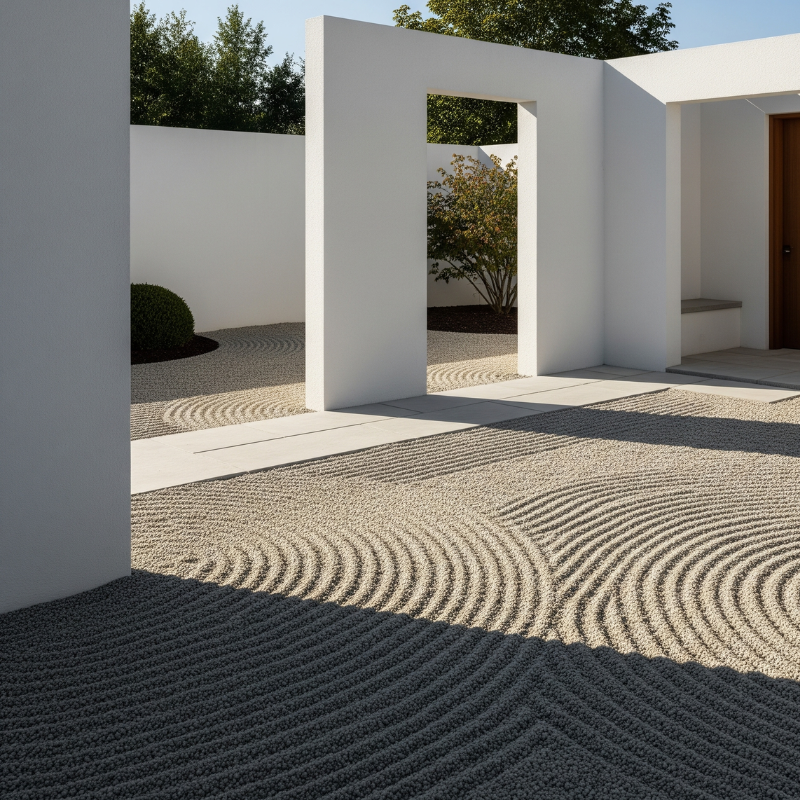
Gravel or crushed granite serves as a visual representation of water in Zen gardens. Raked into concentric or flowing patterns, it evokes ripples or currents, encouraging mindfulness. In modern versions, white or grey gravel complements minimalist architecture, providing texture without clutter.
Tip: Use large, open gravel beds as meditative visual zones or borders around seating areas.
2. Rocks as Sculptural Anchors
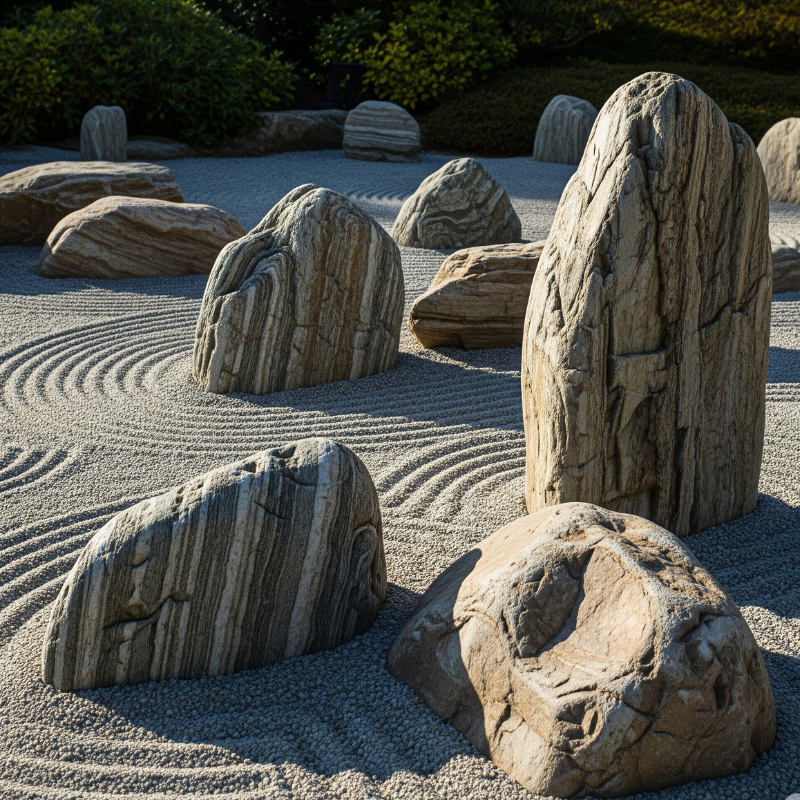
Natural stones are central to Zen design. They represent mountains, islands, or stillness—and in modern gardens, they can double as sculptural art. Opt for raw, asymmetrical stones over polished ones to preserve their organic energy.
Placement is key: always consider balance and asymmetry. Let the rocks feel like they belong to the landscape, not like they were placed there forcefully.
3. Neutral, Natural Materials
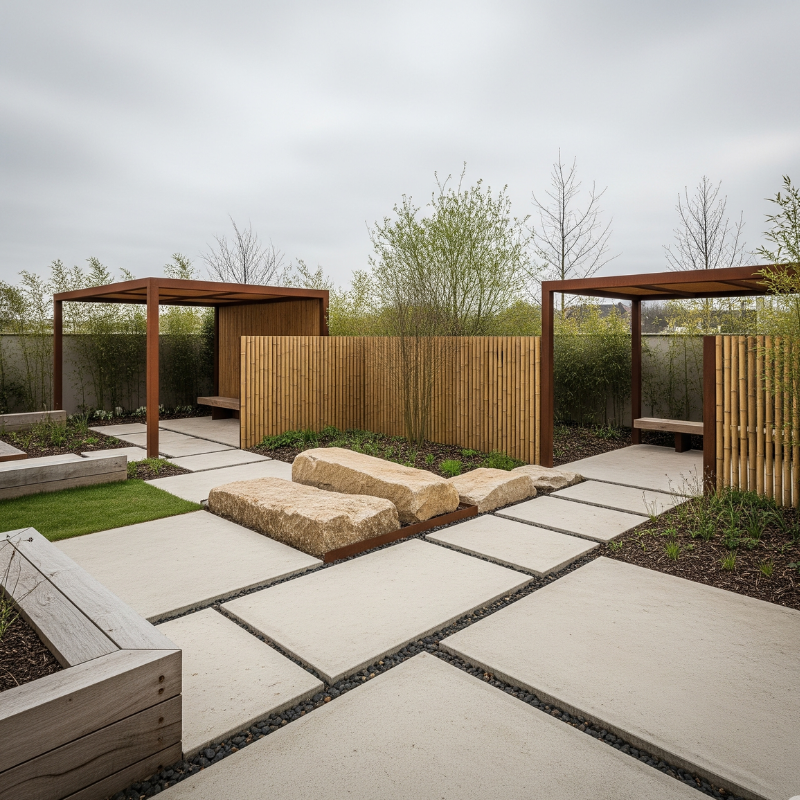
Concrete, timber, bamboo, corten steel, and limestone—these materials align beautifully with both modern minimalism and Zen philosophy. Use them for pathways, fences, or minimalist pergolas. The goal is to keep the palette natural and subdued, allowing the garden to feel grounded and unobtrusive.
4. Intentional Planting
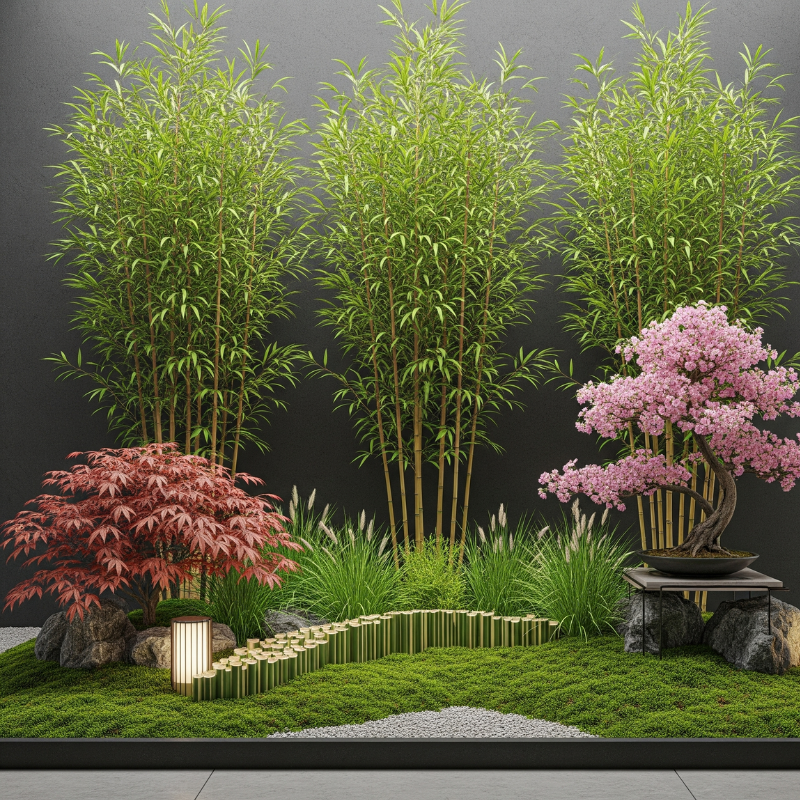
Forget overcrowded flower beds. In a modern Zen garden, less is more. Choose a few varieties of plants—such as Japanese maple, bamboo, moss, or ornamental grasses—and arrange them with space in mind. These green elements should offer visual rhythm, not chaos.
Pro tip: Stick to green foliage with varying textures. Introduce color only when it feels intentional, such as a single blooming bonsai or a flowering cherry tree.
5. Water Features for Sound and Stillness
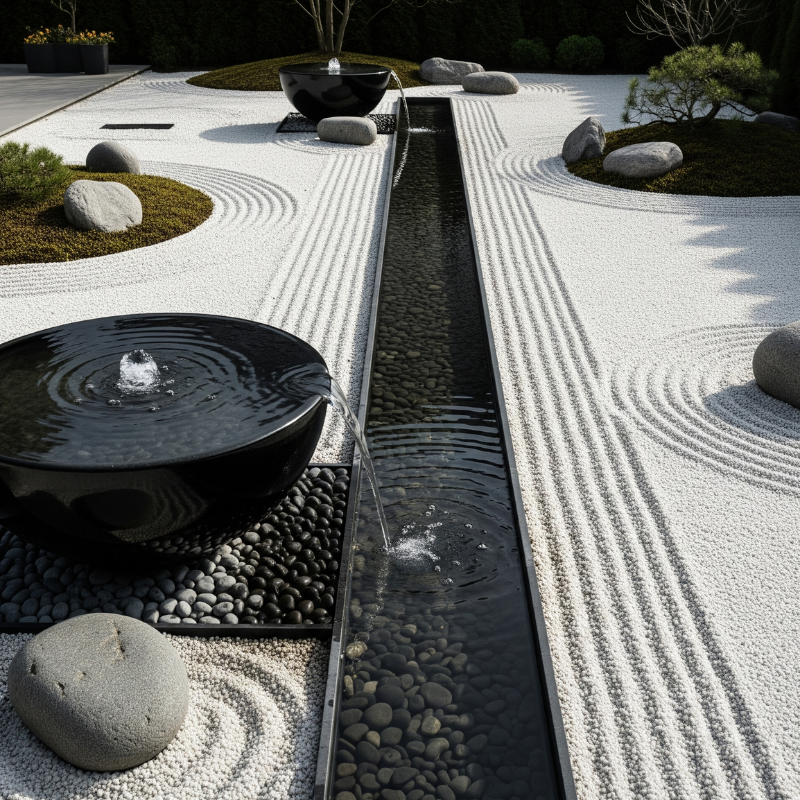
Although dry Zen gardens avoid water, many modern adaptations incorporate small, sleek water features. A black stone bowl with trickling water or a narrow reflecting pool adds auditory depth and calm.
Keep it quiet and subtle—this isn’t the place for loud fountains or bubbling jets.
6. Minimalist Outdoor Furniture

If your Zen garden includes a sitting area or patio, opt for low-profile, neutral furniture. Think teak loungers, woven mats, or stone benches. The furniture should be functional but fade into the background, allowing the natural elements to remain the focus.
Designing for Flow, Not Just Function
Modern Zen gardens aren’t just about how they look—they’re about how they feel. Movement through the space should be intentional and slow. Every element—from stepping stones to sight lines—should encourage pause, breath, and awareness.
Use curated sightlines that draw the eye toward a focal point, such as a sculptural tree, stone lantern, or large rock. Frame views with architectural elements like wooden screens or pergolas to maintain privacy and mystery.
The Emotional Benefits of Zen Minimalism
Beyond aesthetics, Zen gardens offer real psychological and emotional benefits. Studies show that natural, organized spaces reduce anxiety and improve mental clarity. A minimalist Zen garden can become your personal sanctuary—a place to read, meditate, reflect, or simply be.
In today’s fast-paced world, having a space that invites you to slow down is not just a luxury—it’s a necessity.
Final Thoughts: A Garden for the Soul
Blending minimalist architecture with Zen garden design is more than a trend—it’s a timeless expression of balance, beauty, and intentional living. Whether you’re designing a small courtyard, a rooftop nook, or a full backyard oasis, embracing simplicity can lead to surprisingly rich results.
Start small. Clear the clutter. Choose natural materials. Create spaces that invite stillness.
Ready to bring Zen-inspired calm into your home?
Explore more peaceful design ideas and architecture insights at Ideas for Architecture—where design meets mindfulness, one space at a time.





